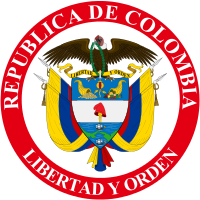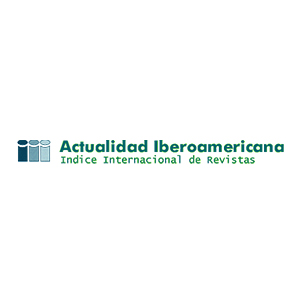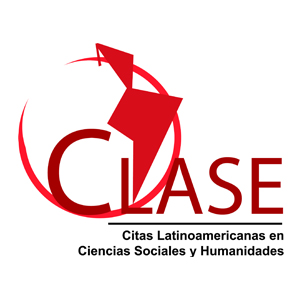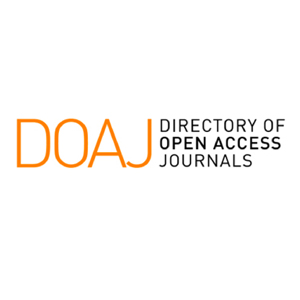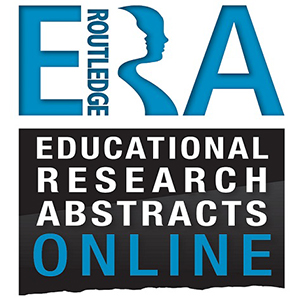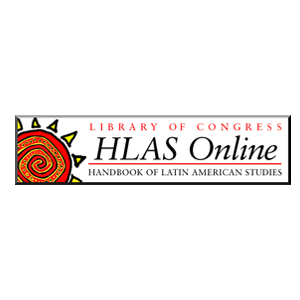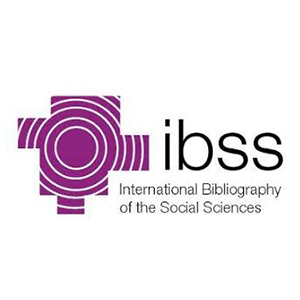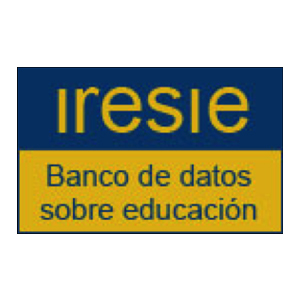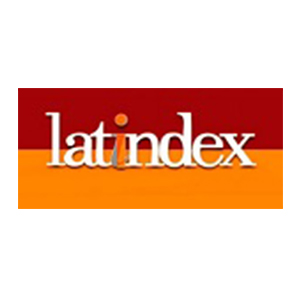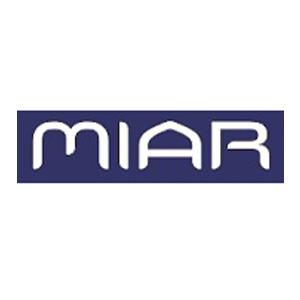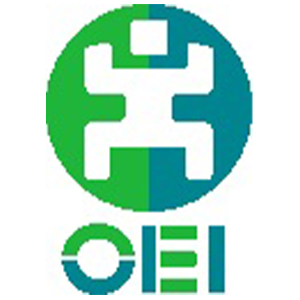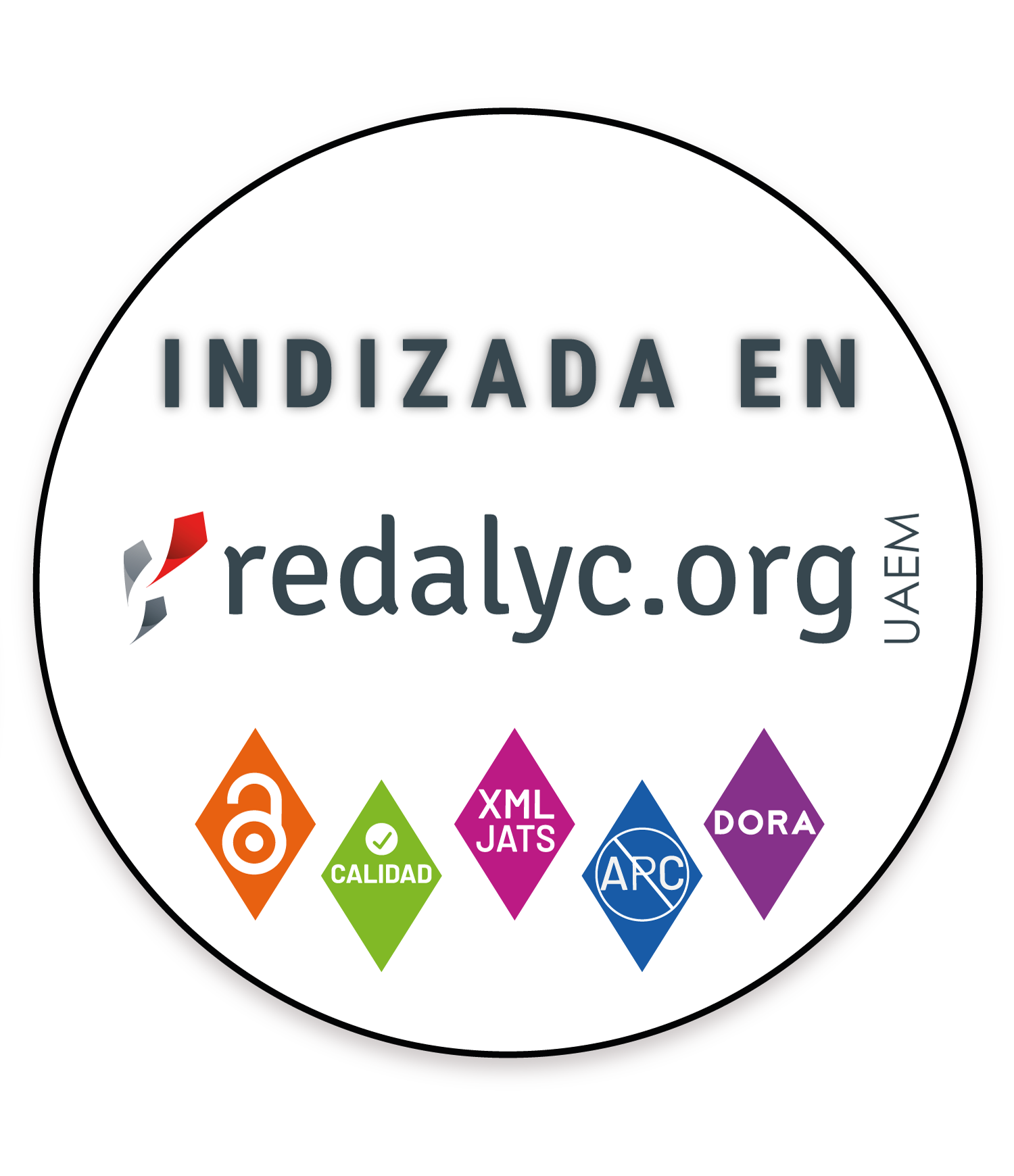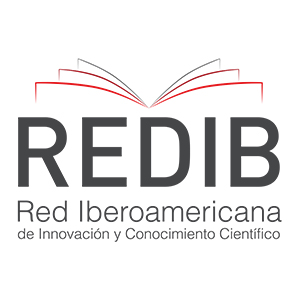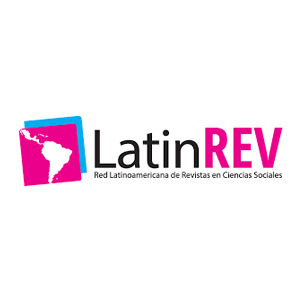Diferencias de género en la elección de una carrera universitaria en estudiantes de educación media
Gender Differences in the Choice of a University Career in High School Students
Diferenças de gênero na escolha de um curso universitário em alunos do ensino médio
Este artículo analizó la asociación entre el nivel educativo de los progenitores, el desempeño en las pruebas Saber 11 y la autoeficacia universitaria para explicar las aspiraciones universitarias de estudiantes de grado once de educación media. El análisis se fundamentó en la Teoría Social Cognitiva del Desarrollo de Carrera/Profesión (SCCT). 183 estudiantes de cuatro instituciones educativas públicas de Cali hicieron parte del estudio. Este estudio descriptivo e inferencial utilizó el análisis de rutas —path analysis— para evaluar tres modelos —general, mujeres y hombres— donde se revisó: (1) el nivel educativo de los progenitores influencia el des- empeño en las pruebas Saber 11; (2) las pruebas Saber 11 influencian la autoeficacia universitaria y (3) las aspiraciones universitarias; y (4) la autoeficacia influencia las aspiraciones universitarias. Los resultados muestran una relación estadísticamente positiva y significativa entre las pruebas Saber 11 y la autoeficacia, y entre la autoeficacia y las aspiraciones universitarias en los modelos general y de los hombres. El modelo de las mujeres solo encontró este tipo de relación entre la autoeficacia y las aspiraciones universitarias. Contrario a previos estudios, no se encontró relación entre el nivel educativo de los progenitores y las pruebas Saber 11, ni entre estas y las aspiraciones universitarias. Se recomienda a los programas de orientación vocacional/profesional enfocar sus acciones educativas en disminuir los estereotipos de carrera, fortalecer la autoeficacia en las capacidades académicas y proporcionar experiencias significativas de aprendizaje en la construcción de los trayectos profesionales y ocupacionales ajustados a las expectativas personales y las demandas de un mundo cambiante.
examen de ingreso, elección profesional, formación profesional, motivación, acceso a la educación (es)
exame de admissão, escolha de carreira, formação profissional, motivação, acesso à educação (pt)
Ali, S. R. y McWhirter, E. H. (2006). Rural Appalachian youth’s vocation- al/educational postsecondary aspirations: Applying social cognitive career theory. Journal of career development, 33(2), 87-111. https:// doi.org/10.1177/0894845306293347
Arellano, M. L. (2020). Ingenieras civiles de la Universidad Autónoma de Aguascalientes, 1973-2018. ¿Mujeres a contracorriente? Diálogos sobre educación, 11(21). https://doi.org/10.32870/dse.v0i21.630
Arslan, A. (2013). Investigation of Relationship between Sources of Self-Efficacy Beliefs of Secondary School Students and Some Vari- ables. Educational Sciences: Theory and Practice, 13(4), 1983-1993.
Arastaman, G. y Özdemir, M. (2019). Relationship between academic aspiration, academic self-efficacy and cultural capital as perceived by high school students. Egitim Ve Bilim, 44(197), 105-119. https:// pdfs.semanticscholar.org/ea26/9345e98e81b5dd888d4e49e3c- ce64ac40547.pdf?_ga=2.35691363.257969172.1675550444- 2001427247.1675550444
Bandura, A. (1989). Human agency in social cognitive theory. American psychologist, 44(9), 1175-1184.
Barry, A. E., Chaney, B. y Chaney, J. D. (2011). The impact of truant and alcohol-related behavior on educational aspirations: a study of us high school seniors. Journal of school health, 81(8), 485-492. https:// doi.org/10.1111/j.1746-1561.2011.00618.x
Berbery, M. L. y O’Brien, K. M. (2018). Going to college? Latina/Lati- no high school students’ college-going self-efficacy and education- al goals. Journal of Career Assessment, 26(2), 377-392. https://doi. org/10.1177/1069072717695587
Bohon, S. A., Johnson, M. K. y Gorman, B. K. (2006). College aspira- tions and expectations among Latino adolescents in the United States. Social Problems, 53(2), 207-225. https://doi.org/10.1525/ sp.2006.53.2.207
Bregman, A. B. (2010). Educational Aspirations: Supporting College Trajectories among Latino Youth (Doctoral dissertation). Univer- sity of Michigan. https://deepblue.lib.umich.edu/bitstream/han- dle/2027.42/77747/abregman_1.pdf?sequence=1&isAllowed=y
Brown, S. D. y Lent, R. W. (2006). Preparing Adolescents to make career decisions. A social cognitive perspective. En F. Pajares y T. Urdan (Eds.), Self-efficacy beliefs of adolescents (pp. 201-223). Information Age Publishing.
Brown, S. D. y Lent, R. (2012). Career Development and Counseling: Putting Theory and Research to Work (2nd ed.). John Wiley & Sons. ProQuest ebrary.
Buquet, A., Cooper, J. A. y Loredo, H. R. (2010). Sistema de indicadores para la equidad de género en instituciones de educación superior. https://cieg.unam.mx/img/igualdad/eisistindi.pdf
Castillo, R., Portilla, M., Hernández, J., Muñoz, C. y Bayardo, L. (2013).
Estrategias de enseñanza aprendizaje y resultados pruebas Saber Pro 2011-2 en competencias genéricas. Estudio de caso para 7 programas de Administración de Empresas de la ciudad de Cali. Univer- sidad Santiago de Cali. https://portalicfespruebas.icfes.gov.co/web/ guest/resultados-de-investigaciones-2013
Celis, M. T., Jiménez, Ó. A. y Jaramillo, J. F. (2012). ¿Cuál es la brecha de la calidad educativa en Colombia en la educación media y en la superior? Icfes. Estudios sobre la calidad de la educación en Colom- bia. Bogotá, Colombia: Icfes. https://www.researchgate.net/profile/ Marly-Tatiana-Celis-Galvez/publication/324149872_Cual_es_la_ brecha_de_la_calidad_educativa_en_Colombia_en_la_educa- cion_media_y_en_la_superior/links/5ac1518f45851584fa75a127/ Cual-es-la-brecha-de-la-calidad-educativa-en-Colombia-en-la-edu- cacion-media-y-en-la-superior.pdf
Ceja, M. (2004). Chicana college aspirations and the role of parents: De- veloping educational resiliency. Journal of Hispanic Higher Educa- tion, 3(4), 338-362. https://doi.org/10.1177/1538192704268428
Cheryan, S. y Plaut, V. C. (2010). Explaining underrepresentation: A theo- ry of precluded interest. Sex roles, 63, 475-488. https://link.springer. com/article/10.1007/s11199-010-9835-x
Cupani, M., Azpilicueta, A. E. y Sialle, V. (2017). Evaluación de un mode- lo social-cognitivo de la elección de la carrera desde la tipología de Holland en estudiantes de la escuela secundaria. Revista Española de Orientación y Psicopedagogía, 28(3), 8-24.
daneysena(2018).ClasificaciónÚnicadeocupacionesparaColombia.https:// www.mintrabajo.gov.co/documents/20147/61040102/20201223+- Clasificacion+CUOC.pdf/48d6bd59-20fc-4f68-d829-c74ce2e- 90f80?t=1609861773720
Eckert, P. y McConnell-Ginet, S. (2013). Language and gender. Cam- bridge University Press.
Escamilla Gil, M. G. (2018). Carreras femeninas, masculinas y mixtas. Elección de estereotipos. Revista Mexicana de Orientación Educati- va, 15(35).
Escobedo Portillo, M. T., Hernández Gómez, J. A., Estebané Ortega, V. y Martínez Moreno, G. (2016). Modelos de ecuaciones estructurales: Características, fases, construcción, aplicación y resultados. Cien- cia y trabajo, 18(55), 16-22. http://dx.doi.org/10.4067/S0718- 24492016000100004
Flores, L. Y., Navarro, R. L. y DeWitz, S. J. (2008). Mexican American high school students’ postsecondary educational goals: Applying social cognitive career theory. Journal of Career Assessment, 16(4), 489- 501. https://doi.org/10.1177/1069072708318905
Gati, I. y Pérez, M. (2014). Gender differences in career preferences from 1990 to 2010: Gaps reduced but not eliminated. Journal of counseling psychology, 61(1), 63-80. https://doi.org/10.1037/a0034598
Gómez, S. M. C., Gutiérrez, D. M. G. y Hassan, A. R. (2011). Determinantes del rendimiento académico en Colombia: pruebas Icfes Saber 11, 2009. Revista Universidad EAFIT, 46(160), 48–72. https://publicaciones.eafit.edu.co/index.php/revista-universidad-eafit/article/view/754
González, L. M. (2008). College choice of Latino high school students: Influence of demographics, academic preparation, and academic self-efficacy beliefs on intended level of post-secondary institution (Doctoral dissertation). North Carolina State University. https://re- pository.lib.ncsu.edu/bitstream/handle/1840.16/3090/etd.pdf?se- quence=2&isAllowed=y
González, L. M., Stein, G. L. y Huq, N. (2013). The influence of cultur- al identity and perceived barriers on college-going beliefs and as- pirations of Latino youth in emerging immigrant communities. His- panic Journal of Behavioral Sciences, 35(1), 103-120. https://doi. org/10.1177/0739986312463002
Gushue, G. V. (2006). The relationship of ethnic identity, career decision-making self-efficacy and outcome expectations among Latino/a high school students. Journal of Vocational Behavior, 68(1), 85-95. https://doi.org/10.1016/j.jvb.2005.03.002
Hostrup, J. A. (2011). Ecological factors affecting Hispanic urban middle school and high school adolescents’ college and career aspirations (Doctoral dissertation). Texas a&m University. https://core.ac.uk/ download/pdf/147140553.pdf
Howard, K. A., Carlstrom, A. H., Katz, A. D., Chew, A. Y., Ray, G. C.,
Laine, L. y Caulum, D. (2011). Career aspirations of youth: Untangling race/ethnicity, ses, and gender. Journal of Vocational Behavior, 79(1), 98-109. https://doi.org/10.1016/j.jvb.2010.12.002
Hoyt, C. L. (2005). The role of leadership efficacy and stereotype ac- tivation in women’s identification with leadership. Journal of Leadership & Organizational Studies, 11(4), 2-14. https://doi. org/10.1177/107179190501100401
Icfes (2017). Guía de Interpretación y uso de resultados del examen Saber 11. Bogotá d. c. https://www.icfes.gov.co/documents/20143/193560/ Guia%20interpretacion%20uso%20resultados%20saber%20 11%20-%20establecimientos%20educativos-2017.pdf
Inda, M., Rodríguez, C. y Peña, J. V. (2013). Gender differences in apply- ing social cognitive career theory in engineering students. Journal of Vocational Behavior, 83(3), 346-355. https://doi.org/10.1016/j. jvb.2013.06.010
Jiang, Y., Song, J., Lee, M. y Bong, M. (2014). Self-efficacy and achieve- ment goals as motivational links between perceived contexts and achievement. Educational Psychology, 34(1), 92-117. https://doi.org /10.1080/01443410.2013.863831
Kaya, D. y Bozdag, H. C. (2016). Resources of Mathematics Self-Efficacy and Perception of Science Self-Efficacy as Predictors of Academic Achievement. European Journal of Contemporary Education, 18(4), 438-451.
Kazi, A. S. y Akhlaq, A. (2017). Factors Affecting Students’ Career Choice. Journal of Research and Reflections in Education (jrre), 11(2). https://www.researchgate.net/profile/Asma-Shahid-Kazi/publica- tion/325987918_Factors_Affecting_Students%27_Career_Choice/ links/5ba0ab3c299bf13e6038e19d/Factors-Affecting-Students-Ca- reer-Choice.pdf
Lalanne, T. y Solanet, M. (2019). ¿Dónde están las mujeres en las carreras de ingeniería?: el caso argentino [Propuesta de trabajo de gradua- ción, Universidad de San Andrés]. https://repositorio.udesa.edu.ar/jspui/bitstream/10908/16848/1/%5bP%5d%5bW%5d%20T.%20L.%20Adm.%20Lalanne,%20Te%c3%b3filo%20y%20Solanet,%20 Manuel.pdf
Lent, R. W. (2005). A social cognitive view of career development and counseling. In S. D. Brown y R. W. Lent (Eds.), Career development and counseling: Putting theory and research to work (pp. 101-127). John Wiley.
Lent, R. W. y Brown, S. D. (2006). On conceptualizing and assessing
social cognitive constructs in career research: A measurement guide. Journal of career assessment, 14(1), 12-35. https://doi. org/10.1177/1069072705281364
Lent, R. W., Brown, S. D. y Hackett, G. (2000). Contextual supports and barriers to career choice: A social cognitive analysis. Journal of Counseling Psychology, 47(1), 36. https://doi.org/10.1037/0022- 0167.47.1.36
Lent, R. W., Brown, S. D., Talleyrand, R., McPartland, E. B., Davis, T., Chopra, S. B., Alexander, M. S., Suthakaran, V. y Chai, C. M. (2002). Career choice barriers, supports, and coping strategies: College stu- dents’ experiences. Journal of Vocational behavior, 60(1), 61-72. ht- tps://doi.org/10.1006/jvbe.2001.1814
Lin, T. J. y Tsai, C. C. (2018). Differentiating the sources of Taiwanese high school students’ multidimensional science learning self-effica- cy: An examination of gender differences. Research in Science Edu- cation, 48(3), 575-596. https://doi.org/10.1007/s11165-016-9579-x
López, M. H. (2009). Latina/os and education: Explaining the attain- ment gap. Pew Research Center. http://www.pewhispanic.org/files/ reports/115.pdf
Macías-González, G., Caldera-Montes, J. F. y Salán-Ballesteros, M. N. (2019). Orientación vocacional en la infancia y aspiraciones de ca- rrera por género. Convergencia, 26(80). https://doi.org/10.29101/ crcs.v26i80.10516
Manzano-Sánchez, H. (2016). Personal and Environmental Variables that Hinder or Foster College Aspirations among Latina/o High School Stu- dents (Doctoral dissertation). Texas a&m University. https://oaktrust.library.tamu.edu/bitstream/handle/1969.1/157033/MANZANOSAN- CHEZ-DISSERTATION-2016.pdf?sequence=1&isAllowed=y
Manzano-Sánchez, H., Outley, C., González, J. E. y Matarrita-Cascan- te, D. (2018). The influence of self-efficacy beliefs in the academic performance of Latina/o students in the United States: A systemat- ic literature review. Hispanic Journal of Behavioral Sciences, 40(2), 176-209. https://doi.org/10.1177/0739986318761323
Manzano-Sánchez, H., Ramírez, E. J. M. y Upegui, P. C. (2019). Aspira- ciones profesionales y universitarias de estudiantes de grado once de bachillerato de una institución educativa pública de Cali/Profes- sional and college aspirations among 11 th grade high school stu- dents in Cali. reop-Revista Española de Orientación y Psicopedago- gía, 30(3), 10-25.
Martínez-Barrera, A. N. (2014). “No con quien naces, sino con quien pases” Jóvenes y resiliencia académica en Colombia - resumen eje- cutivo. https://www.icfes.gov.co/documents/20143/234156/Jove- nes+y+resiliencia+academica+en+colombia+-+resumen+ejecutivo. pdf
McWhirter, E. H., Luginbuhl, P. J. y Brown, K. (2014). ¡Apóyenos! Latina/o student recommendations for high school sup- ports. Journal of Career Development, 41(1), 3-23. https://doi. org/10.1177/0894845312470511
McWhirter, E. H., Torres, D. M., Salgado, S. y Valdez, M. (2007). Per- ceived barriers and postsecondary plans in Mexican American and White adolescents. Journal of Career Assessment, 15(1), 119-138. https://doi.org/10.1177/1069072706294537
McWhirter, E. H., Valdez, M. y Caban, A. R. (2013). Latina adolescents’ plans, barriers, and supports: A focus group study. Journal of Latina/o Psychology, 1(1), 35. https://doi.org/10.1037/a0031304
Ministerio de Educación Nacional (men, 2017). Avances en la cobertura en educación superior en Colombia. Educación Superior Boletín N.o 1. https://snies.mineducacion.gov.co/1778/articles-393225_boletin_ dic_2017.pdf
National Center for Education Statistics (nce, 2020). The condition of education 2020. https://nces.ed.gov/pubsearch/pubsinfo.asp?pu- bid=2020144
Newbold, P., Carlson, W. L. y Thorne, B. M. (2008). Estadística para Admi- nistración y Economía (6a ed.). Pearson Educación S.A.
Ochoa-Cervantes, A. y Diez-Martínez, E. (2009). Las aspiraciones ocupa- cionales en el bachillerato: Una mirada desde la Psicología Educati- va. Perfiles educativos, 31(125), 38-61.
Ojeda, L., Flores, L. Y. y Navarro, R. L. (2011). Social cognitive predictors of Mexican American college students’ academic and life satisfaction. Journal of Counseling Psychology, 58(1), 61. https://doi. org/10.1037/a0021687
Posada, M. J. y Mendoza, M. (2014). Determinantes del logro académi- co de los estudiantes de grado 11 en el periodo 2008-2010. Una perspectiva de género y región. https://www.icfes.gov.co/docu- ments/20143/234488/Marvin%20Mendoza%20Jackelin%20Posa- da%20-%20Determinantes%20logro%20academico%20estudian- tes%20de%20grado%2011%20periodo%202008%202011%20 Una%20perspecitva%20de%20genero%20y%20region.pdf
Poynton, T. A. y Lapan, R. T. (2017). Aspirations, achievement, and school counselors’ impact on the college transition. Journal of Counseling y Development, 95(4), 369¯377.https://doi.org/10.1002/jcad.12152
Rayle, A. D., Arredondo, P. y Kurpius, S. E. R. (2005). Educational self-ef- ficacy of college women: Implications for theory, research, and prac- tice. Journal of Counseling & Development, 83(3), 361. https://doi. org/10.1002/j.1556-6678.2005.tb00356.x
Rodríguez-Martínez, M. C., Sánchez-Rivas, E. y Labajos-Manzanares,
M. T. (2017). Vocación ocupacional y género en estudiantes universi- tarios de Ciencias de la Salud. Revista Latinoamericana de Ciencias Sociales, Niñez y Juventud, 15(1), 345-356. http://dx.doi.org/10.116 00/1692715x.1512130102015
Romero Navarrete, S. A. (2009). Expectativas y aspiraciones de los es- tudiantes de undécimo grado en la localidad de Usme en Bogotá dc (Dos estudios de caso) [Trabajo de grado, Universidad Colegio Mayor de Nuestra Señora del Rosario]. http://repository.urosario.edu. co/bitstream/handle/10336/1108/52416497- 2009.pdf;sequence=1
Sánchez, B., Reyes, O. y Singh, J. (2006). Makin’It in College the Value of Significant Individuals in the Lives of Mexican American Adoles- cents. Journal of Hispanic Higher Education, 5(1), 48-67. https://doi. org/10.1177/1538192705282570
Schermelleh-Engel, K., Moosbrugger, H. y Müller, H. (2003). Evaluat- ing the fit of structural equation models: Tests of significance and descriptive goodness-of-fit measures. Methods of psychological research online, 8(2), 23-74. http://citeseerx.ist.psu.edu/viewdoc/ download?doi=10.1.1.509.4258&rep=rep1&type=pdf
Spadies. (2019). Reporte: Caracterización de los matriculados a nivel nacional por área de conocimiento-sexo. Ministerio de Educación Nacional. https://www.mineducacion.gov.co/sistemasinfo/Informa- cion-a-la-mano/212400:Estadisticas
Tabachnick, B. G. y Fidell, L. S. (2001). Using multivariate statistics (4th ed, pp.656-771). Pearson.
Tierney, W. G., Bailey, T., Constantine, J., Finkelstein, N. y Hurd, N. F. (2009). Helping Students Navigate the Path to College: What High Schools Can Do. ies Practice Guide. ncee 2009-4066. What Works Clearinghouse. https://files.eric.ed.gov/fulltext/ED506465.pdf
Wisely, L. W. (2013). Relationships between college knowledge and col- lege-going beliefs of eighth grade students (Doctoral dissertation). Bay- lor University. https://baylor-ir.tdl.org/bitstream/handle/2104/8862/ Lynn_Wisely_phd.pdf?sequence=1&isAllowed=y
APA
ACM
ACS
ABNT
Chicago
Harvard
IEEE
MLA
Turabian
Vancouver
Descargar cita
Citaciones

Métricas PlumX
Visitas
Descargas
Recibido: 25 de abril de 2021; Aceptado: 8 de octubre de 2021
Resumen
Este artículo analizó la asociación entre el nivel educativo de los progenitores, e desempeño en las pruebas Saber 11 y la autoeficacia universitaria para explicar las aspiraciones universitarias de estudiantes de grado once de educación media. E análisis se fundamentó en la Teoría Social Cognitiva del Desarrollo de Carrera/Profesión (sed). 183 estudiantes de cuatro instituciones educativas públicas de Car hicieron parte del estudio. Este estudio descriptivo e inferencial utilizó el análisis de rutas -path analysis- para evaluar tres modelos -general, mujeres y hombres- donde se revisó: (1) el nivel educativo de los progenitores influencia el desempeño en las pruebas Saber 11; (2) las pruebas Saber 11 influencian la autoeficacia universitaria y (3) las aspiraciones universitarias; y (4) la autoeficacia influencia las aspiraciones universitarias. Los resultados muestran una relación estadísticamente positiva y significativa entre las pruebas Saber 11 y la autoeficacia, y entre la auto-eficacia y las aspiraciones universitarias en los modelos general y de los hombres El modelo de las mujeres solo encontró este tipo de relación entre la autoeficacia y las aspiraciones universitarias. Contrario a previos estudios, no se encontró relación entre el nivel educativo de los progenitores y las pruebas Saber 11, ni entre estas y las aspiraciones universitarias. Se recomienda a los programas de orientación vocacional/profesional enfocar sus acciones educativas en disminuir los estereotipos de carrera, fortalecer la autoeficacia en las capacidades académicas y proporcionar experiencias significativas de aprendizaje en la construcción de los trayectos profesionales y ocupacionales ajustados a las expectativas personales y as demandas de un mundo cambiante.
Palabras clave:
acceso a la educación, examen de ingreso, elección profesional formación profesional, motivación.Abstract
This article analyzed the association between parents' educational level, academic performance on the Saber 11 test, and university self-efficacy to explain college aspirations in 11th high school students. The analysis was based on Social Cognitive Career Theory (sed). 183 high school students from 4 public educational institutions in Cali participated in the study. This descriptive and inferential study used a path analysis to evaluate three hypothetical models -general, women, and men -where (1) the educational level of the parents influences academic performance in the Saber 11 test; in turn, (2) the Saber 11 test influences university self-efficacy and (3) college aspirations; finally, (4) college self-efficacy influences college aspirations. Findings present a statistically positive and significant relationship between the Saber 11 test and self-efficacy and between self-efficacy and college aspirations in general and men's models. The women's model only found a statistically positive and significant relationship between self-efficacy and college aspirations. Contrary to previous studies, no relationship was found between parents' educational level and the Saber 11 test, nor between these and college aspirations. College readiness programs should guide their educational actions to reduce career stereotypes, strengthen the students' beliefs in their academic abilities, and provide meaningful learning experiences for professional and occupational construction of paths adjusted to students' capabilities and the demands of a changing world.
Keywords:
access to education, entrance examinations, occupational choice, vocational training, motivation.Resumo
Este estudo analisou a associação entre o nível de escolaridade dos pais, o desempenho nos Prueba Saber 11 e a autoeficácia universitária para explicar as aspirações universitárias dos alunos do 11° ano do ensino médio. A análise baseou-se na Teoria Social Cognitiva do Desenvolvimento da Carreira / Profissão (sed). 183 alunos de quatro instituições de ensino públicas em Cali fizeram parte do estudo. Este estudo descritivo e inferencial usou análise de trilha para avaliar três modelos -geral, mulheres e homens- onde: (1) a escolaridade dos pais influencia o desempenho nos Prueba Saber 11; (2) os testes do Saber 11 influenciam a autoeficácia na faculdade e (3) as aspirações da faculdade; e (4) a autoeficácia influencia as aspirações da faculdade. Os resultados mostram uma relação estatisticamente positiva e significativa entre os Prueba Saber 11 e a autoeficácia, e entre a autoeficácia e as aspirações universitárias nos modelos geral e masculino. O modelo feminino encontrou apenas uma relação estatisticamente positiva e significativa entre autoeficácia e aspirações universitárias. Ao contrário de estudos anteriores, não foi encontrada relação entre o nível de escolaridade dos pais e os Prueba Saber 11, nem entre estes e as aspirações universitárias. Recomenda-se a realização de programas de orientação vocacional / profissional com foco na ação educativa na redução de estereótipos de carreira, no fortalecimento da autoeficácia nas habilidades acadêmicas e na oferta de experiências de aprendizagem significativas na construção de percursos profissionais e ocupacionais ajustados às expectativas e expectativas pessoais.
Palavras-chave:
acesso à educação, exame de admissão, escolha de carreira, formação profissional, motivação.Introducción
Las aspiraciones universitarias y de carrera hacen parte del complejo proceso del desarrollo profesional de una persona y se manifiestan con mayor énfasis durante la adolescencia (Brown y Lent, 2012). Las aspiraciones son una expresión "ideal" de las metas académicas que se quieren alcanzar (Howard et al., 2011). Elegir o definir una vocación es un proceso mucho más complejo conformado por los rasgos de personalidad, intereses vocacionales, aptitudes, habilidades (Rodríguez-Martínez et al., 2017) y las aspiraciones corresponden al paso preliminar hacia su concreción. Tener aspiraciones previas por ingresar a la educación superior y elegir una carrera está relacionado con mayores posibilidades de ingresar y de mantenerse en la universidad (Ojeda et al., 2011; Poynton y Lapan, 2017). Por lo tanto, conocer y apoyar las aspiraciones de los adolescentes para ingresar a la educación superior y elegir una carrera tiene un impacto significativo en sus futuros logros educativos y ocupacionales (Bohon et al., 2006).
Estudios previos muestran que los estudiantes de educación media tienen altas aspiraciones de ingresar a la universidad (McWhirter et al., 2014; Ochoa Cervantes y Diez-Martínez, 2009; Romero, 2009) y no se encuentran diferencias de género en dichas aspiraciones (Flores et al., 2008; González et al., 2013). Sin embargo, estas aspiraciones universitarias no siempre se convierten en metas concretas debido a la influencia negativa de ciertos factores personales o contextuales. Dentro de los factores personales se encuentra una baja autoeficacia personal, expectativas negativas con relación a los beneficios inmediatos de ingresar a la universidad y el establecimiento de metas académicas poco realistas o no planificadas (Brown y Lent, 2006; Gushue, 2006; Lent et al., 2002; McWhirter et al., 2013; Tierney et al., 2009). Dentro de los contextuales se encuentra un desempeño bajo en las pruebas Saber 11, bajos ingresos familiares, tener que aportar económicamente a su familia, padres con bajo nivel educativo, escuelas con recursos limitados, falta de información sobre el proceso de ingreso a la universidad y limitadas oportunidades para conocer sobre las profesiones (Brown y Lent, 2006; Gushue, 2006; Lent et al., 2002; López, 2009; Manzano-Sánchez et al., 2018; McWhirter et al., 2013; McWhirter et al., 2007; Tierney et al., 2009). Aunque los estudios sobre las limitaciones de ingreso a la universidad son numerosos, son escasos los que proveen información sobre una mirada de conjunto de algunos de estos factores y de variables académicas intervinientes en dichas aspiraciones.
Unido a la aspiración de ingreso a la universidad, se encuentra la elección de una carrera. En las últimas décadas, las diferencias entre hombres y mujeres en la elección de una carrera han disminuido, aunque no han desaparecido completamente (Gati y Pérez, 2014). Los hombres siguen eligiendo carreras relacionadas con habilidades técnicas y numéricas, uso de herramientas e instrumentos y trabajos con equipos de cómputo; por su parte, las mujeres continúan eligiendo carreras relacionadas con habilidades artísticas y humanísticas, atención al público, servicios de salud mental y comunitario (Buquet et al., 2010; Escamilla, 2018; Gati y Pérez, 2014; Hostrup, 2011; Macías-González et al., 2019; Manzano et al., 2019). Entre otros factores, los estereotipos de género siguen influenciando las preferencias por las carreras; aspecto con mayor incidencia en las mujeres (Cheryan y Plaut, 2010; Gati y Pérez, 2014). Por ejemplo, la baja presencia de las mujeres en las ingenierías se encuentra asociado con una baja autoeficacia (Inda et al., 2013; Lalanne y Solanet, 2019) y con las resistencias de sus familias y de su círculo social para aceptar esta decisión (Arellano, 2020). En el panorama colombiano, las preferencias de carreras entre los hombres y las mujeres son similares a los estudios de otros países. Existe una mayor concentración de hombres en ingenierías, arquitectura, urbanismo y afines; y de mujeres en economía, administración, contaduría y afines (Spadies, 2019). Sin embargo, es escasa la discusión sobre la preponderancia de mujeres en profesiones "femeninas" -relacionadas con el cuidado, el servicio y la ayuda a los demás- y de los hombres en profesiones "masculinas" -relacionadas con la vida pública, el prestigio social, el control y resolución de problemas- (Eckert y McConnell-Ginet, 2013).
Teniendo en cuenta la tradicional brecha existente entre los estudiantes colombianos que aspiran a ingresar a la universidad y los que finalmente ingresan así como la concentración de mujeres en las carreras por tradición "femeninas" y de hombres en las "masculinas", es necesario analizar los factores personales y contextuales intervinientes en dichas aspiraciones. Este estudio responde a esta brecha en la literatura al examinar las relaciones de la autoeficacia, el nivel educativo de los padres y las pruebas Saber 11 con aspiraciones universitarias y de carrera de estudiantes de educación media en Cali.
El desarrollo profesional o aspiraciones universitarias y de carrera
El desarrollo profesional puede ser visto como un proceso que involucra las tareas, roles, trabajos, ocupaciones que una persona hace a lo largo de su vida (Hoyt, 2005). Se vislumbra inclusive desde la infancia y la adolescencia con la vivencia de experiencias generadoras de talentos, intereses, valores y conocimientos -como una aproximación a las representaciones del mundo laboral-, continúa en la adultez a través de la progresión del comportamiento profesional y culmina con la transición hacia la jubilación. Sin embargo, estas acciones no necesariamente son lineales, ni positivas, ni tampoco están siempre bajo el control de las personas (por ejemplo, fluctuaciones en las condiciones socioeconómicas, inestabilidad del mercado laboral, quebrantos de salud). Una de las primeras etapas del desarrollo profesional corresponde a la elección de una carrera, la cual corresponde al proceso de seleccionar una profesión y por lo general coincide con el final de la educación media (Brown y Lent, 2012). Por este motivo, el papel que asumen las instituciones educativas es fundamental en orientar a los estudiantes en los pasos para ingresar a la educación superior (McWhirter et al., 2014; Tierney et al., 2009).
En Colombia, solo el 38 % de los egresados de la educación media hacen su transición inmediata a la educación superior (MEN, 2017), algunos ingresan al mercado laboral y otros quedan cesantes. Respecto a la participación por género en la educación superior, las mujeres tienen la mayor participación; en el primer semestre de 2019, de cada diez matriculados, seis fueron mujeres y cuatro hombres (Spadies, 2019). Un estudio en Colombia muestra una brecha total educativa significativa a favor de los hombres y una brecha en el área de lenguaje a favor de las mujeres (Posada y Mendoza, 2014). Por lo tanto, se hace necesario seguir comprendiendo cómo factores personales y ambientales afectan de forma diferente a los hombres y a las mujeres en sus aspiraciones universitarias y de carrera.
Las diferencias de género en las preferencias de carrera
El género como categoría social organiza las relaciones humanas, regula los comportamientos, configura estereotipos y produce profundas desigualdades entre hombres y mujeres, otorgando ventajas a uno sobre el otro (Buquet et al., 2010). Los estudios desarrollados bajo una perspectiva de género identifican la desigualdad entre hombres y mujeres y facilitan el desarrollo de acciones orientadas a disminuir la desigualdad (Buquet et al., 2010). Muchos estudios han demostrado que el género juega un rol determinante en la elección de una carrera (Brown y Lent, 2006; Buquet et al., 2010; Gati y Pérez, 2014) y en las fuentes de la autoeficacia (Arslan, 2013; Lin y Tsai, 2018). Las diferencias de género en la elección de una carrera posiblemente no están tan relacionadas con capacidades o habilidades personales, sino más bien con percepciones sociales tradicionales, discriminaciones basadas en el género o la falta de estímulo y de apoyo para carreras de género no tradicionales (Gati y Pérez, 2014). Este estudio no pretende identificar las razones de estas diferencias, sino mostrar la tendencia que se presenta en las aspiraciones universitarias y de carrera de hombres y de mujeres; así como las diferencias en la autoeficacia y las experiencias previas de aprendizaje. Hacer visible estas tendencias en las primeras etapas de la formación profesional mitiga las disparidades en las trayectorias profesionales, y después laborales, de las nuevas generaciones.
La Teoría Social Cognitiva del Desarrollo Profesional
La comprensión del desarrollo profesional -o de una carrera- de los adolescentes para este estudio se sustenta en la Teoría Social Cognitiva del Desarrollo de Carrera/Profesión, SCCT -por sus siglas en inglés, Social Cognitive Career Theory-. Este enfoque tiene como finalidad explicar cómo las personas (a) desarrollan intereses vocacionales, (b) toman decisiones ocupacionales, (c) logran distintos niveles de éxito y estabilidad profesional y (d) experimentan satisfacción o bienestar en el ambiente de trabajo (Brown y Lent, 2012). La SCCT describe la interinfluencia entre variables cognitivas de la persona, otros aspectos de la persona, experiencias de aprendizaje y condiciones del entorno para ayudar a perfilar el curso del desarrollo profesional (Lent et al., 2000). Propone dos niveles complementarios para su análisis. El primer nivel corresponde a las variables cognitivas de la persona (por ejemplo, autoeficacia, expectativas de resultados y metas personales), que le permiten agenciar o tener control sobre su propio desarrollo profesional. El segundo nivel de análisis considera diferentes vías a través de las cuales otros aspectos de la persona (p. ej., edad, género o etnicidad), las experiencias de aprendizaje (p. ej., desempeño académico, pruebas externas) y condiciones del entorno (p. ej., nivel socioeconómico, barreras y apoyos) influencian los intereses, las elecciones vocacionales y los logros de desempeño educativos y laborales (Lent et al., 2000). Debido a la complejidad de la teoría, este estudio tendrá en cuenta del primer nivel, la autoeficacia y del segundo nivel el género, el desempeño en las pruebas Saber 11 -experiencias de aprendizaje-, el nivel educativo de los padres y su influencia en las aspiraciones universitarias de los estudiantes de grado once de cuatro instituciones educativas públicas de Cali.
La autoeficacia y las aspiraciones de carrera
Según Bandura (1989), la autoeficacia corresponde a los juicios -o creencias- que las personas hacen sobre sus propias capacidades para organizar y ejecutar las acciones necesarias para lograr determinados tipos de actuaciones. La autoeficacia no es rasgo unitario o global como es la autoestima o la autodeterminación; la autoeficacia es un conjunto dinámico de creencias vinculadas a dominios de desempeño y actividades específicas (Lent, 2005). Estudios previos muestran la relación entre la autoeficacia universitaria y las aspiraciones educativas postsecundarias (González et al., 2013); correlaciones significativas entre la autoeficacia matemática y la percepción de la autoeficacia científica con el rendimiento académico (Kaya y Bozdag, 2016); influencia significativa de la autoeficacia académica en las orientaciones universitarias de los estudiantes (Bregman, 2010) y en la trayectoria hacia la universidad (González, 2008).
Así mismo, la autoeficacia académica es un predictor importante de las aspiraciones académicas y universitarias (Arastaman y Özdemir, 2019; Ali y McWhirter, 2006). Este estudio se concentrará en identificar qué tanta confianza sienten los estudiantes de ingresar a la universidad y de superar los obstáculos en su aspiración universitaria.
El desempeño académico en las pruebas Saber 11 y la autoeficacia
El desarrollo profesional está influenciado por la calidad de las experiencias de aprendizaje a las que se encuentran expuestos los estudiantes. En Colombia, las pruebas Saber 11 son un requisito para el ingreso a la educación superior. Estudios previos muestran al promedio de las calificaciones como el contribuyente más importante tanto de la autoeficacia universitaria como de las metas educativas en estudiantes latinas(os) de educación media (Berbery y O'Brien, 2018). Adicionalmente, cuando altos desempeños en las pruebas (Grade Point Average, GPA) están asociados con apoyos -familiares o escolares- la influencia es mayor en la autoeficacia para ir a la universidad (Berbery y O'Brien, 2018). Los logros académicos y la persuasión verbal contribuyen a la formación de las creencias de autoeficacia y explican en un alto porcentaje la intención de elegir una carrera (Cupani et al., 2017). De hecho, cuando se obtienen éxitos y logros académicos se fortalece la autoeficacia (Brown y Lent, 2006). En este estudio las pruebas Saber 11 son consideradas experiencias de aprendizaje previas relacionadas positivamente con la autoeficacia y las aspiraciones universitarias.
El nivel educativo de los padres y su influencia en las experiencias de aprendizaje
Los factores contextuales afectan las experiencias de aprendizaje a través de las cuales se desarrollan la autoeficacia y las expectativas de resultados (Lent et al., 2000). El ambiente y los antecedentes familiares están directamente relacionados con los logros y el rendimiento académico de sus hijos (Castillo et al., 2013; Posada y Mendoza, 2014). De igual manera, los progenitores, adultos significativos y amigos influencian positiva o negativamente la decisión de elección de una carrera o una profesión (Ceja, 2004; Kazi y Akhlaq, 2017; Sánchez et al., 2005). Respecto a la educación de los progenitores, la educación de los padres y madres está relacionada de forma positiva con desempeño académico en las pruebas Saber 11 (Celis et al., 2012); aunque en otros casos es el nivel educativo del padre quien tiene una mayor influencia (Martínez Barrera, 2014). Entre más alto es el nivel de escolaridad de los progenitores son menores las probabilidades de encontrar a sus hijos en niveles académicamente bajos (Gómez et al., 2011). De modo similar, entre más alto es el nivel de educación de sus progenitores más probabilidades hay de que sus hijos elijan metas educativas de pregrado y de posgrado (Barry et al., 2011; Wisely, 2013). En este estudio se considerará el nivel educativo de la madre y del padre como variables relacionadas con el desempeño en las pruebas Saber 11 y con las aspiraciones universitarias.
Propósito del estudio
La principal pregunta de investigación es: ¿cómo están asociados el nivel educativo de los padres, el desempeño académico en las pruebas Saber 11 y la autoeficacia universitaria para explicar las aspiraciones universitarias de estudiantes de grado once de educación media? También se formuló una pregunta complementaria: ¿existe variación en las variables del modelo cuando se hace el análisis por género?
En el marco del modelo de elección propuesto por Lent et al. (1994) de SCCT se evalúan las siguientes hipótesis: (a) El nivel educativo de los padres -variable del contexto- está positivamente relacionado con el desempeño en las pruebas Saber 11 -experiencias de aprendizaje-. (b) El desempeño en las pruebas Saber 11 está directa y positivamente relacionado con la autoeficacia universitaria. (c) La autoeficacia universitaria está directa y positivamente relacionada con las aspiraciones universitarias -entendidas como metas de elección en la SCCT-. Basados en las investigaciones previas se espera que la autoeficacia universitaria explique la mayor variación en las aspiraciones universitarias de los estudiantes. (d) Una hipótesis exploratoria: el desempeño en las pruebas Saber 11 está relacionado de forma directa con las aspiraciones universitarias. De acuerdo con la SCCT, las experiencias previas de aprendizaje influencian las metas de elección a través de la autoeficacia y no directamente. Teniendo en cuenta las diferencias entre hombres y mujeres en las aspiraciones universitarias, se indaga el ajuste en los análisis de rutas -path analysis- del modelo entre los géneros.
Método
Participantes
183 estudiantes de grado once de cuatro instituciones educativas públicas de Cali hicieron parte del estudio. Es una muestra por conveniencia y su tamaño se calculó con una confianza del 95 %, un margen de error del 5 % y una proporción de éxito del 76,5 % (Newbold y Carlson, 2007). La proporción de éxito se fundamenta en el estudio de Manzano-Sánchez (2016) donde el 76,5 % de los estudiantes de 11.° grado planean ir a una institución de educación superior.
Instrumentos
El cuestionario recolectó información de las variables aspiraciones universitarias y de carrera, autoeficacia, resultados pruebas Saber 11 e información sociodemográfica. Para conocer las aspiraciones universitarias se les preguntó: después de terminar su bachillerato, qué tan probable es que usted: (1) trabaje tiempo completo, (2) estudie para ser un técnico laboral, (3) estudie para ser un tecnólogo, (4) estudie para ser un profesional universitario, (5) ingrese a la policía o ejército, (6) aún no ha decidido qué hacer.
Para conocer las aspiraciones universitarias se les preguntó: ¿cuál es la carrera que más le gustaría estudiar? Para el desempeño académico en las pruebas Saber 11, se les preguntó por el puntaje global obtenido.
La autoeficacia universitaria se midió utilizando un instrumento de 11 preguntas formulado por Lent et al. (2005). Cinco preguntas miden la autoeficacia académica y seis preguntas la eficacia de afrontamiento. La autoeficacia académica indica la confianza en su capacidad para llevar a cabo con éxito una variedad de tareas académicas necesarias para ingresar con éxito a la universidad. La autoeficacia de afrontamiento indica la confianza en la capacidad para hacer frente a una variedad de barreras o problemas que podrían experimentar en sus aspiraciones de ingreso a la educación superior. El instrumento utiliza una escala de 10 puntos -0 (no confiado del todo) a 9 (confiado completamente)-. Este instrumento fue adaptado de Manzano-Sánchez (2016) y este a su vez de Lent et al. (2005) con autorización para su utilización y modificación. El valor del coeficiente alfa para la escala de autoeficacia en este estudio fue 0,86, en el estudio de Manzano-Sánchez (2016) fue 0,88 y del estudio de Lent et al. (2005) fue 0,91.
Para comparar los resultados de las pruebas Saber 11 se definió la media de la escala en 250 puntos y una desviación estándar 50 (Icfes, 2017). La información demográfica incluyó: edad, nivel de escolaridad del padre y de la madre, estrato socioeconómico familiar y el género del encuestado -hombre, mujer y otro-.
Análisis de los datos y criterios de bondad y ajuste
El estudio utilizó el método descrito por Tabachnick y Fidell (2001) para el análisis de rutas -path analysis-. El primer paso consiste en definir un modelo hipotético, el segundo paso es evaluar las rutas propuestas -relación entre variables- y, si es necesario, modificar el modelo -adicionando o eliminando rutas basados en el Lagrange Multiplier Test-. El tercer paso es obtener el modelo que explica el problema multidimensional.
La evaluación de la bondad de ajuste de un modelo requiere tener en cuenta varias medidas simultáneas porque no existe una sola prueba estadística para identificar un modelo correcto (Schermelleh-Engel et al., 2003). La prueba de chi cuadrado es utilizado para evaluar la idoneidad de un path analysis; se espera un chi cuadrado no significativo, lo cual indica que los datos observados se ajustan a los datos hipotéticos (Tabachnick y Fidell, 2001). Debido a la sensibilidad del chi cuadrado al tamaño de muestra, otras pruebas no dependientes del tamaño de muestra -aunque sensibles a especificaciones incorrectas del modelo- serán identificadas: índice de ajuste normalizado (NFI), índice de ajuste comparativo (CFI), error cuadrático medio de aproximación (RMSEA) y el criterio de información Akaike (AIC) (Schermelleh-Engel et al., 2003). NFI valores por encima de 0,90, CFI valores por encima de 0,94, RMSEA valores por debajo de 0,06 son indicadores de un buen ajuste de los datos (Tabachnick y Fidell, 2001). AIC valores cercanos a 0 indican un mejor ajuste cuando se comparan modelos con diferente número de constructos (Escobedo Portillo et al., 2016).
Los modelos estructurales, como el path analysis, son técnicas para muestras grandes, aunque puede ser de mayor utilidad considerar al menos 10 sujetos por parámetro estimado si el tamaño del efecto es grande y si las variables se distribuyen normalmente (Tabachnick y Fidell, 2001). En este estudio, las variables se distribuyeron normalmente y corresponde a una muestra aceptable para el grupo en general. Sin embargo, la muestra se disminuye cuando los modelos se evalúan por género; por lo tanto, los resultados por género se deben interpretar con cautela y sirven de punto de partida para futuros estudios en el contexto colombiano.
Resultados Análisis preliminar
Mediante el spss versión 22 se hizo un análisis de los datos en busca de valores faltantes y de normalidad. De los 186 cuestionarios diligenciados inicialmente, 4 no registraron el género y 2 registraron "otro"; estos 6 cuestionarios fueron descartados. De los 182 participantes, 22 no reportaron los resultados de las pruebas Saber 11, 26 no informaron el nivel educativo de sus padres y en la variable de autoeficacia se encontraron 7 datos faltantes. Los modelos estructurales permiten la estimación de los datos faltantes mediante el algoritmo EM; por lo tanto, estos datos fueron estimados. El estadístico chi cuadrado de Satorra-Bentler para la estimación del modelo (Tabachnick y Fidell, 2001) se utilizó para mejorar cualquier subestimación de la varianza debido a la anormalidad de los datos.
Análisis del modelo hipotético
El primer paso fue probar el ajuste del modelo hipotético con la muestra completa utilizando una matriz de covarianza con cinco variables y con cinco rutas estimadas: el nivel educativo del padre (1) y el de la madre (2) están relacionados con las pruebas Saber 11; las pruebas Saber 11 están relacionadas con la autoeficacia (3) y con las aspiraciones universitarias (4) ; la autoeficacia está relacionada con las aspiraciones universitarias (5) . Los resultados de este modelo indicaron un ajuste adecuado con un chi cuadrado x 2 de 5,89 y un p=0,020, NFI=0,92, CFI=0,96, RMSEA=0,05 y AIC=37,89. De las cinco rutas estimadas, solo dos rutas fueron significativas: la variabilidad en la autoeficacia explicada por las pruebas Saber 11 fue del 33,4 % y de las aspiraciones universitarias explicada por la autoeficacia fue del 35,7 %. Basados en estos resultados, así como en las recomendaciones de la prueba de Lagrange Multiplier modificamos el modelo eliminando rutas no significativas. En el primer modelo modificado se eliminó la ruta entre las pruebas Saber 11 y las aspiraciones universitarias, teniendo en cuenta que era una hipótesis exploratoria y no estaba sustentada por la SCCT. Este primer modelo modificado también arrojó un ajuste adecuado con un chi cuadrado x2 significativo de 7,37 y un p=0,19, NFI=0,90, CFI=0,96, RMSEA=0,05 y AIC=37,36. La variabilidad en la autoeficacia explicada por las pruebas Saber 11 fue del 33,5 % y de las aspiraciones universitarias explicada por la autoeficacia fue del 38,9 %, quien tuvo un ligero incremento respecto al modelo hipotético. Un segundo modelo modificado fue evaluado dejando solo las dos rutas significativas las cuales corresponden a la influencia de las variables personales (experiencias previas de aprendizaje -pruebas Saber 11 y autoeficacia) en las aspiraciones universitarias de los estudiantes de bachillerato. Este segundo modelo modificado arrojó un ajuste adecuado con un chi cuadrado x2 significativo de 1,51 y un p=0,21, NFI=0,97, CFI=0,98, RMSEA=0,05 y AIC=17,51. La variabilidad en la autoeficacia explicada por las pruebas Saber 11 fue del 33,6 % y de las aspiraciones universitarias explicada por la autoeficacia fue del 38,9 %, manteniendo las mismas proporciones encontradas en el primer modelo modificado.
En el modelo final con el tamaño de muestra total (n=182) se encontró que dos de las cinco hipótesis fueron comprobadas: las pruebas Saber 11 están directa y positivamente relacionadas con la autoeficacia universitaria y a su vez, la autoeficacia universitaria está directa y positivamente relacionada con las aspiraciones universitarias. El modelo final no encontró relaciones significativas entre el nivel educativo del padre y la madre con las pruebas Saber 11, ni una relación directa entre las pruebas Saber 11 y las aspiraciones universitarias, sino mediada por la autoeficacia. Al eliminar las rutas no significativas en el modelo, la relación entre la autoeficacia y las aspiraciones universitarias tuvo un ligero incremento (de 35,7 % a 38,9 %).
Análisis del modelo hipotético por género
Para identificar potenciales diferencias entre las variables que afectan las aspiraciones universitarias entre las mujeres y los hombres se realizó un análisis multigrupo fundamentado en la revisión de literatura en donde existen diferencias entre los hombres y las mujeres respecto a sus aspiraciones universitarias y de carrera.
El modelo hipotético de las mujeres indicó un ajuste adecuado con un chi cuadrado x2 de 2,97 y un p=0,56, NFI=0,92, CFI=1,0, RMSEA=0,00 y AIC=34,97. De las cinco rutas estimadas, solo la variabilidad en las aspiraciones universitarias es explicada por la autoeficacia en un 32,3 %. El primer modelo modificado indica un ajuste adecuado en la mayoría de los estimadores con un chi cuadrado x2 de 5,16 y un p=0,39, NFI=0,87 (por debajo del valor aceptado de 0,90), CFI=0,99, RMSEA=0,018 y AIC=35,16. La variabilidad en las aspiraciones universitarias explicada por la autoeficacia es del 36,3 %, con un ligero incremento en comparación con el modelo hipotético en 32,3 %. El segundo modelo modificado indica un ajuste adecuado en la mayoría de los estimadores con un chi cuadrado x 2 de 2,24 y un p=0,13, NFI=0,90, CFI =0,93 (por debajo del valor aceptado de 0,95), RMSEA=0,10 (por encima del valor aceptado de 0,05), y AIC=18,24. La variabilidad en las aspiraciones universitarias explicada por la autoeficacia se mantiene en 36,3 %. El modelo final de las mujeres (n=107) encontró solamente una relación directa y significativa entre la autoeficacia y las aspiraciones universitarias.
El modelo hipotético de los hombres indicó un ajuste adecuado solo en el chi cuadrado x2 de 5,55 y un p=0,23. NFI=0,87 y CFI=0,94 estuvieron ligeramente por debajo de los valores recomendados y RMSEA=0,072 estuvo por encima del valor aceptado. AIC=37,55 fue mayor en comparación con los subsiguientes modelos modificados. Similar al modelo hipotético total, dos rutas fueron significativas: la variabilidad en la autoeficacia explicada por las pruebas Saber 11 fue del 42,7 % y la de las aspiraciones universitarias explicada por la autoeficacia fue del 41,7 %. El primer modelo modificado indicó un ajuste adecuado en la mayoría de los estimadores con un chi cuadrado x2 de 5,58 y un p=0,34, NFI=0,87 (por debajo del valor aceptado de 0,90), CFI=0,98, RMSEA=0,04 y AIC=35,58. La variabilidad en la autoeficacia explicada por las pruebas Saber 11 fue del 42,9 % y de las aspiraciones universitarias explicada por la autoeficacia fue del 42,6 %, las cuales presentaron un ligero incremento. El segundo modelo modificado presentó un ajuste adecuado con un chi cuadrado x2 de 3,60 y un p=0,05, NFI=0,99, CFI=1,00, RMSEA=0,00 y AIC=16,03. La variabilidad en la autoeficacia explicada por las pruebas Saber 11 fue del 42,7 % y de las aspiraciones universitarias explicada por la autoeficacia fue del 42,6 %, muy similares al primer modelo modificado. El modelo final de los hombres (n=75) encontró que, las pruebas Saber 11 están directa y positivamente relacionadas con la autoeficacia universitaria y, a su vez, la autoeficacia universitaria está directa y positivamente relacionada con las aspiraciones universitarias. La tabla 1 muestra el resumen de los estimadores de los modelos.
Fuente: elaboración propia.
Tabla 1:
Resultados de los estimadores de los modelos
La figura 1 muestra los coeficientes estandarizados de los caminos de los principales modelos analizados.
Figura 1:
Coeficientes estandarizados de los principales modelos. Modelo Hipotético general (H), Modelo Modificado (M), Modelo Hipotético Mujeres (HM), Modelo Hipotético Hombres (HH), Modelo Mujeres Modificado2 (MM2) y Modelo Hombres Modificado 2 (HM2). Los coeficientes estandarizados y significativos * = >p 0,05.
Las aspiraciones de carrera por género
Los encuestados escribieron la carrera o las carreras que les gustaría estudiar. Para el análisis, las respuestas se organizaron en siete grupos teniendo en cuenta la clasificación única de ocupaciones para Colombia correspondiente al gran grupo 2 de profesionales, científicos e intelectuales y del gran grupo 3 de técnicos y profesiones de nivel medio (DANE y SENA, 2018). La tabla 2 presenta las preferencias por áreas ocupacionales de los estudiantes en donde las áreas de la salud y las ciencias e ingenierías son las de mayor preferencia.
Fuente: elaboración propia.
Tabla 2:
Preferencias por áreas ocupacionales
Para establecer relaciones entre las áreas ocupacionales y el género se utilizó la prueba de independencia de chi cuadrado, x 2 de 60,40 y un p=0,00, lo cual permite establecer relación entre las áreas ocupacionales y el género. Las áreas de mayor preferencia de los hombres son ciencias e ingenierías y carreras técnicas. Las áreas de mayor preferencia de las mujeres son salud, derecho, ciencias sociales y culturales, educación, negocios y administración, y carreras militares. Las carreras más preferidas por los hombres: ingeniería de sistemas (8,3 %) y licenciatura en educación física y deportes (6,6 %), seguidas con el mismo porcentaje arquitectura, licenciatura en lenguas extranjeras y medicina (4,1 %). Las carreras más preferidas por las mujeres: medicina (10,1 %), psicología (8,5 %), seguidas con el mismo porcentaje administración de empresas, contaduría y derecho (5,3 %).
Discusión
Con base en la SCCT se evaluó un modelo para identificar cómo el nivel educativo de los progenitores afecta las experiencias previas de aprendizaje (pruebas Saber 11); a su vez, cómo las experiencias previas de aprendizaje afectan la autoeficacia universitaria y finalmente cómo tanto las experiencias de aprendizaje como la autoeficacia afectan las aspiraciones universitarias de estudiantes de bachillerato. Luego, se examinaron las variables del estudio en el modelo con la muestra total y con los modelos por género. El modelo hipotético evidenció un ajuste de bondad de los datos para la muestra total, aunque solo dos de las cinco rutas tuvieron una significancia estadística. Retirando progresivamente las rutas no significativas se diseñaron los dos modelos modificados y se obtuvo un ligero incremento de la variabilidad en las aspiraciones universitarias explicada por la autoeficacia universitaria. La autoeficacia se encuentra positiva y significativamente relacionada con las experiencias previas de aprendizaje (pruebas Saber 11) y las aspiraciones universitarias se encuentran positiva y significativamente relacionadas con la autoeficacia universitaria. Los modelos de los hombres tuvieron un comportamiento similar a los modelos de muestra total, mientras en los modelos de las mujeres la única ruta significativa fue la relación entre la autoeficacia y las aspiraciones universitarias. Al eliminar las rutas no significativas y definir el modelo final, en todos los casos (muestra total, mujeres y hombres) hubo un incremento en la variabilidad de las aspiraciones universitarias explicada por la autoeficacia.
La influencia de la autoeficacia en las aspiraciones universitarias fue el factor predictivo presente en todos los modelos. Al margen del género, las creencias de los estudiantes sobre sus capacidades para cumplir con los requisitos y superar los obstáculos son las que más determinan el ingreso a la universidad. Estudiantes con altos niveles de autoeficacia tienen mayores aspiraciones de elegir una carrera profesional en lugar de elegir una tecnológica o una técnica. Este resultado es consistente con la SCCT quien le atribuye a la autoeficacia la mayor influencia en las metas académicas (Brown y Lent, 2006). Estudios previos muestran el fuerte valor predictivo de las variables personales (la autoeficacia vocacional y las expectativas de resultados) en las aspiraciones universitarias (Ali y McWhirter, 2006). Así mismo, cuando se asocian factores personales y contextuales con las aspiraciones académicas, la autoeficacia académica emerge como un predictor más determinante que el capital cultural (Arastaman y Özdemir, 2019) o las percepciones de los padres, los profesores y los compañeros de clase (Jiang et al., 2014).
Respecto a la influencia de las experiencias previas de aprendizaje (Saber 11) en la autoeficacia universitaria, los resultados confirmaron nuestra hipótesis en el modelo general y en el modelo de los hombres. Sin embargo, no lo fue para el caso de las mujeres. Las experiencias previas de éxito y de logros académicos fortalecen los niveles de autoeficacia de los estudiantes y los proyectan con mayor confianza hacia la consecución de logros futuros (Brown y Lent, 2006). En consecuencia, resultados sobresalientes y satisfactorios en las pruebas Saber 11 contribuyen a incrementar la confianza de los estudiantes en sus capacidades de llevar a cabo los pasos para ingresar a la universidad. La relación encontrada entre las experiencias previas de aprendizaje y la autoeficacia es consistente con estudios previos donde el desempeño académico es el mayor factor predictivo de la autoeficacia universitaria (Berbery y O'Brien, 2018). Además, los logros académicos previos tienen una mayor contribución a la autoeficacia cuando se comparan con otras fuentes de autoeficacia como el aprendizaje vicario, la persuasión verbal y la activación fisiológica (Cupani et al., 2017).
La falta de relación encontrada entre las pruebas Saber 11 y la autoeficacia universitaria en el modelo de las mujeres se explica en la influencia de las otras fuentes de autoeficacia. Contar con buenas calificaciones en el bachillerato, tener familiares o conocidos en la universidad, recibir ánimo por parte de personas para continuar con sus estudios o manejar adecuadamente sus niveles de ansiedad respecto a la vida universitaria son factores para considerar en la construcción de la autoeficacia de las mujeres. Lin y Tsai (2018) encontraron una relación más cercana entre los estados fisiológicos emocionales y la autoeficacia en el aprendizaje de las ciencias naturales en las mujeres; aunque no hallaron diferencias significativas entre los géneros cuando se trataba de la influencia de las experiencias previas y el aprendizaje vicario en la autoeficacia. Por su parte, Arslan (2013) encontró en las mujeres una mayor influencia de las experiencias previas, la persuasión social y los estados fisiológicos y afectivos en la autoeficacia que la influencia encontrada en los hombres. Así mismo, cuando las familias y las estudiantes valoran más la educación superior, los niveles de autoestima y autoeficacia se incrementan (Rayle et al., 2005). Por lo tanto, por la vía de la persuasión social, las mujeres pueden incrementar su autoeficacia universitaria a pesar de haber obtenido un desempeño académico moderado en las pruebas Saber 11.
Las mujeres obtuvieron puntajes menores en las pruebas Saber 11 respecto a los hombres (M=247,35, SD=36,55 y M=260,59, SD=42,44; t= -2,12, p=0,12). Sin embargo, no se establecieron diferencias estadísticamente significativas entre los géneros respecto a la autoeficacia y las aspiraciones universitarias. A pesar de su moderado desempeño en las pruebas Saber 11, las mujeres mantienen los mismos niveles de auto-eficacia y de aspiraciones universitarias que los hombres. Tal vez, las mujeres confían más en otras capacidades y habilidades para ingresar a la universidad y estudiar la carrera de su elección y no solo el desempeño obtenido en las pruebas externas. Este hallazgo es semejante a otro estudio donde tampoco se encontró relación entre el rendimiento académico y las variables personales (autoeficacia y expectativas de resultado) en las mujeres (Manzano-Sánchez, 2016).
La hipótesis sobre la influencia del nivel educativo de los padres en las experiencias previas de aprendizaje no pudo ser validada estadísticamente. La mayoría de los padres tenían como máximo nivel educativo el bachillerato incompleto, lo cual puede explicar la falta de relación encontrada. Estos resultados difieren de otros estudios, donde el nivel educativo de los progenitores está relacionado de forma directa con el logro educativo en las pruebas Saber 11 (Celis et al., 2012; Gómez et al., 2011). Esta falta de relación encontrada no niega la influencia de las condiciones socioeconómicas y familiares en las experiencias de aprendizaje y su relación con las aspiraciones universitarias. Más bien, lleva a considerar otras variables como los amigos, las instituciones educativas y los recursos económicos. Estudios previos muestran que los padres y los amigos son los que más influencian o motivan en el momento de elegir una carrera (Ceja, 2004; Kazi y Akhlaq, 2017; Sánchez et al., 2005). Por su parte, las instituciones educativas tienen un rol destacado en apoyar a sus estudiantes en los planes de ingresar a la educación superior (McWhirter et al., 2014). Sin embargo, la falta de recursos económicos (McWhirter et al., 2007; McWhirter et al., 2013) o la necesidad de apoyar económicamente a sus familias son los principales obstáculos que enfrentan los estudiantes para ingresar a la universidad (López, 2009). En el marco de la SCCT, futuros estudios pueden identificar las percepciones estudiantiles sobre los apoyos necesarios y las barreras que deben sortear en su camino hacia la educación superior.
Conclusiones
Una mirada de conjunto facilita la comprensión de la interinfluencia de los factores personales y contextuales determinantes de las aspiraciones universitarias y de carrera de estudiantes de educación media. Además, contribuye al diseño de estrategias de orientación vocacional y profesional ajustado a las características y expectativas de los estudiantes, de sus familias y de sus entornos socioculturales y económicos. Así mismo, se evidencia la fuerte relación de la autoeficacia en las aspiraciones universitarias y la influencia diferenciada de las experiencias previas de aprendizaje en las mujeres y los hombres. El marcado énfasis en la formación académica en la educación media debería complementarse con el fortalecimiento de la autoeficacia en dominios u opciones vocacionales relacionadas con las capacidades personales de los estudiantes y superando los estereotipos de género. Por lo tanto, las acciones educativas de la orientación profesional deben propiciar reflexiones sobre las creencias de los adolescentes acerca de sus capacidades, los estereotipos de género presentes en las profesiones y el lugar de las experiencias previas de aprendizaje en sus proyecciones.
Un asunto para considerar en futuros estudios o en programas educativos -en especial con estudiantes mujeres- es la influencia positiva de profesionales del mismo género como modelos a seguir -persuasión social- en el desarrollo de los intereses vocacionales, profesionales y ocupacionales de los adolescentes. De igual forma, desde una perspectiva de género, indagar sobre los lugares de los hombres y las mujeres en las sociedades contemporáneas como resultado de sus elecciones y trayectorias profesionales. Futuros estudios pueden indagar la relación entre los apoyos o las barreras presentes en su entorno -familiar, educativo, social-, los cuales promueven u obstaculizan las aspiraciones universitarias y profesionales, particularmente de estudiantes de sectores socioeconómicos bajos. Además, la falta de relación encontrada entre el nivel educativo de los progenitores y las pruebas Saber 11 es una invitación a las instituciones educativas para asumir un rol más destacado en preparar a sus estudiantes para el ingreso a la educación superior y el trabajo; máxime, en tiempos donde la inteligencia artificial y las tecnologías disruptivas están incursionando en todos los aspectos de la vida.
Licencia
Derechos de autor 2023 Revista Colombiana de Educación

Esta obra está bajo una licencia internacional Creative Commons Atribución-NoComercial 4.0.
Todo el trabajo debe ser original e inédito. La presentación de un artículo para publicación implica que el autor ha dado su consentimiento para que el artículo se reproduzca en cualquier momento y en cualquier forma que la Revista Colombiana de Educación considere apropiada. Los artículos son responsabilidad exclusiva de los autores y no necesariamente representan la opinión de la revista, ni de su editor. La recepción de un artículo no implicará ningún compromiso de la Revista Colombiana de Educación para su publicación. Sin embargo, de ser aceptado los autores cederán sus derechos patrimoniales a la Universidad Pedagógica Nacional para los fines pertinentes de reproducción, edición, distribución, exhibición y comunicación en Colombia y fuera de este país por medios impresos, electrónicos, CD ROM, Internet o cualquier otro medio conocido o por conocer. Los asuntos legales que puedan surgir luego de la publicación de los materiales en la revista son responsabilidad total de los autores. Cualquier artículo de esta revista se puede usar y citar siempre que se haga referencia a él correctamente.

